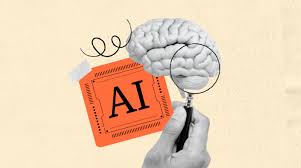The Health Equation: Unpacking Healthcare's Economic Upsides and Downsides

The global health sector is a powerful, yet complex, force with a dual impact on economies worldwide.
On one hand, groundbreaking improvements are driving economic growth and creating new industries.
On the other hand, persistent downsides and systemic challenges are imposing significant financial burdens and exacerbating inequalities.
This intricate relationship demonstrates the healthcare's capacity to both enrich and strain national economies, and highlight the critical need for strategic investment and policy to maximize its benefits and mitigate its costs.
Medical Advancements as Economic Engines
Advancements in medical technology, pharmaceuticals, and innovative care models are direct contributors to economic growth and job creation.
SOURCE: Google
The healthcare and life sciences industries are multi-trillion-dollar sectors that generate high-skilled jobs in research, manufacturing, and technology.
The development of a new drug or medical device can lead to the creation of entire supply chains and a surge in employment.
For instance, the rapid development of mRNA vaccines not only addressed a global public health crisis but also fueled a new wave of investment and job growth in biotechnology.
Innovative care models like telemedicine and personalized medicine are also major economic drivers.
Telemedicine reduces costs associated with travel and physical infrastructure, while increasing access to care, which in turn boosts a population's overall productivity.
A study by McKinsey & Company found that telehealth adoption could potentially save billions annually in healthcare costs.
Personalized medicine, which uses a patient's genetic and lifestyle data to tailor treatments, can lead to more effective therapies and fewer side effects, resulting in a healthier, more productive workforce and less money spent on ineffective treatments.
These innovations are creating a new economic frontier in health.
The Economic Burden of Healthcare Downsides
Despite the upsides, the downsides of modern healthcare impose significant economic costs. The most prominent is rising healthcare expenditures.
SOURCE: Google
In many developed countries, healthcare spending as a percentage of GDP is growing at an unsustainable rate, straining public budgets and private finances.
This is driven by several factors, including aging populations, the high cost of new medical technologies, and administrative inefficiencies.
The US, for example, spends a higher percentage of its GDP on healthcare than any other developed nation, often without achieving better health outcomes.
The economic burden of chronic diseases and mental health issues is also immense. Chronic diseases lead to lost productivity due to absenteeism and disability, costing economies trillions annually.
A report by the World Economic Forum and Harvard School of Public Health estimated the global cost of chronic diseases to be in the trillions of dollars over the next two decades, with a significant portion of this coming from lost economic output.
Similarly, mental health issues lead to reduced productivity, with the WHO estimating that depression and anxiety disorders cost the global economy over a trillion dollars each year in lost productivity.
Inequitable Access and its Economic Toll
Inequitable access to quality healthcare has a profound impact on national productivity and exacerbates economic disparities.
SOURCE: Google
When large segments of the population lack access to basic care, they are more susceptible to illness, which leads to lost work days and reduced productivity.
This has a domino effect on the entire economy. A healthy workforce is a productive workforce.
Conversely, a population burdened by preventable illness is less likely to contribute to economic output.
Furthermore, inequitable access perpetuates poverty cycles. Poor health can lead to job loss or an inability to work, pushing families into financial distress.
The costs of medical treatment can be catastrophic, trapping families in a spiral of debt. This creates a vicious cycle where poverty leads to poor health, and poor health leads back to poverty.
It also creates broader economic disparities between countries, as nations with strong, equitable healthcare systems tend to be more economically stable and competitive.
The ROI of Preventative Care
The return on investment (ROI) of preventative care is often difficult to quantify but is universally recognized as being incredibly high.
By investing in public health and wellness strategies, nations can significantly reduce the incidence of costly chronic diseases.
For example, a small investment in public awareness campaigns for healthy eating and exercise can save a country billions in future treatment costs for diabetes and heart disease.
A study by the Trust for America's Health found that every dollar invested in community-based prevention programs could generate a return of up to $5.60 in healthcare savings.
Public health initiatives, such as vaccination programs and clean water projects, not only save lives but also ensure a healthier workforce that can contribute more effectively to the economy.
This shift from a reactive to a proactive health model is a long-term strategy for building a more resilient and prosperous society.
The focus on wellness and well-being has a direct economic benefit by creating a more productive and vibrant population.
Balancing Innovation and Affordability
Governments and industries globally are attempting to balance healthcare innovation with affordability and equitable access.
A key strategy is the implementation of value-based care models, where healthcare providers are reimbursed for patient health outcomes rather than the number of services they provide. This incentivizes a focus on preventative care and efficiency.
Additionally, governments are negotiating with pharmaceutical companies to lower drug costs and are investing in generic drug production to make essential medicines more affordable.
Another approach is to foster competition and innovation in the health tech sector, encouraging the development of solutions that are both effective and cost-effective. Policies are being developed to create a more streamlined regulatory environment for medical devices and digital health tools, while ensuring patient safety and data privacy.
The goal is to create a system where groundbreaking innovations are not a privilege for the few but a benefit for the many.
Emerging Opportunities and Implications
The challenges and improvements in the health sector are creating significant emerging market opportunities and investment trends.
The global aging population is driving a surge in demand for geriatric care, long-term care services, and technologies that support independent living.
The mental health crisis has led to a boom in investment in digital mental health platforms, therapy apps, and telemedicine for psychiatric services.
These sectors are attracting billions in venture capital as investors recognize their potential for both social impact and financial return.
The focus on wellness is also fueling the growth of industries related to nutrition, fitness, and personal care. The broader economic implications of these trends are significant.
They signal a shift toward a health-centric economy where well-being is not just a personal goal but a key driver of national economic strategy.
By investing in health, nations are investing in their most valuable asset: their people.
This is the central lesson of the health equation, and it's a lesson that is beginning to reshape public policy and business strategy worldwide.
You may also like...
From Etisalat to 9mobile to T2: The Rise, Retreat, and Reinvention of Nigeria’s Fourth Operator

From a meteoric rise to a challenging retreat, Etisalat Nigeria’s evolution into T2 tells a story of resilience, wins, a...
Boxing Blockbuster: Jake Paul and Gervonta Davis Set for November Showdown

In a surprising announcement, Jake Paul is set to face WBA lightweight champion Gervonta "Tank" Davis in an exhibition b...
Carabao Cup Shocker: Grimsby Stuns Man Utd in Penalty Thriller

Manchester United suffered a shocking Carabao Cup exit after losing 12-11 on penalties to League Two side Grimsby Town. ...
Venice Stunner: Paolo Sorrentino's 'La Grazia' Captivates Critics with Record-Breaking Ovation!

Paolo Sorrentino's new film “La Grazia” opened the Venice Film Festival to critical acclaim, presenting a nuanced portra...
The Hunt for 007: Frontrunners Out, Legends Back, New Details Emerge in Bond Saga!

The search for the next James Bond intensifies as actors like Taron Egerton and Glen Powell rule themselves out, while M...
Reading and Leeds Festival Plunged Into Chaos by Secret Set Leaks and Star's Last-Minute Snub

Reading and Leeds Festival 2025 is buzzing with fan speculation about secret sets from The Foo Fighters and Chase & Stat...
Naira Marley Breaks Silence on Mohbad's Death Amid Mounting Controversy

Musician Naira Marley has publicly addressed the controversial death of his former signee, Mohbad, sharing his side of t...
Pete Davidson's Paternal Bliss: Comedian's Dream of Fatherhood Comes True with Elsie Hewitt

Comedian Pete Davidson and model Elsie Hewitt are expecting their first child, announced via Instagram by Hewitt. Davids...




